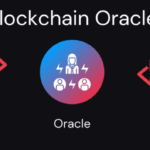In this article, I will explain how to earn rewards with the top NFT staking platforms. I will also show you how to generate passive income by securely locking your NFTs.
- What is NFT Staking?
- How to Earn Rewards Using the Top NFT Staking Platforms
- Example: How to Earn Rewards with MOBOX NFT Staking (Step-by-Step)
- Step 1: Create a MOBOX Account
- Step 2: Connect Your Wallet
- Step 3: Deposit or Purchase NFTs
- Step 4: Stake Your NFT
- Step 5: Monitor and Claim Rewards
- Step 6: Unstake When Needed
- Top NFT Staking Platforms in 2025
- How NFT Staking Works
- Benefits of NFT Staking
- Earn Passive Income
- Increased NFT Utility
- Strengthens Project Ecosystems
- Long-Term Value Growth
- Governance and Voting Rights
- Low Entry Barrier
- Tips to Maximize Your NFT Staking Rewards
- Common Risks and How to Avoid Them
- Smart Contract Vulnerabilities
- Market Volatility
- Platform Scams or Rug Pulls
- Liquidity Lock-Up
- Technical Errors or Wallet Issues
- Low or Changing Reward Rates
- Network Congestion and Gas Fees
- Future of NFT Staking
- Pros & Cons
- Conclusion
- FAQ
You will learn the process, main benefits, and the best platforms like Rarible, NFTX, MOBOX, and Splinterlands that make NFT staking profitable and user-friendly.
What is NFT Staking?
NFT staking is the process of locking non-fungible tokens (NFTs) on a blockchain platform to earn rewards, similar to crypto staking. Instead of selling NFTs, holders stake them on specialized platforms or decentralized apps to earn passive income in the form of tokens, governance rights, or exclusive benefits.
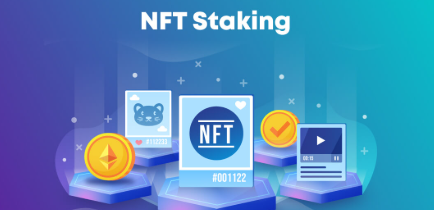
This process improves the utility of NFTs beyond simple ownership or trading. By staking, users help the ecosystem’s liquidity and stability while receiving rewards for their participation. NFT staking connects decentralized finance (DeFi) and digital collectibles, giving investors a new way to increase the value of their assets.
How to Earn Rewards Using the Top NFT Staking Platforms
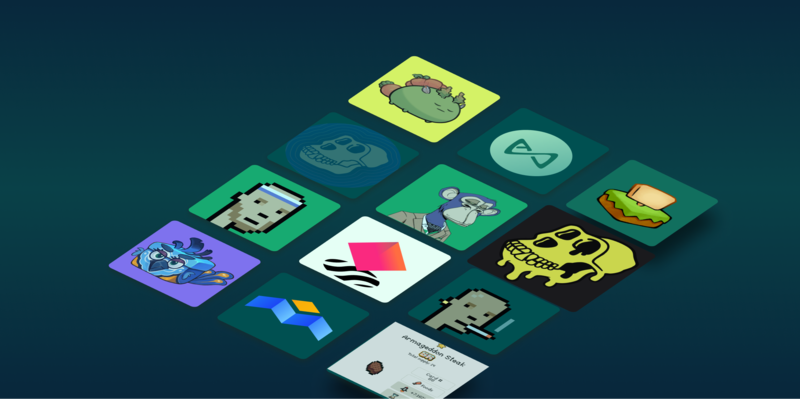
Example: How to Earn Rewards with MOBOX NFT Staking (Step-by-Step)
Step 1: Create a MOBOX Account
Visit the official MOBOX website and sign up with your email or crypto wallet, such as MetaMask or Binance Wallet. This account connects you to the platform’s staking and GameFi features.
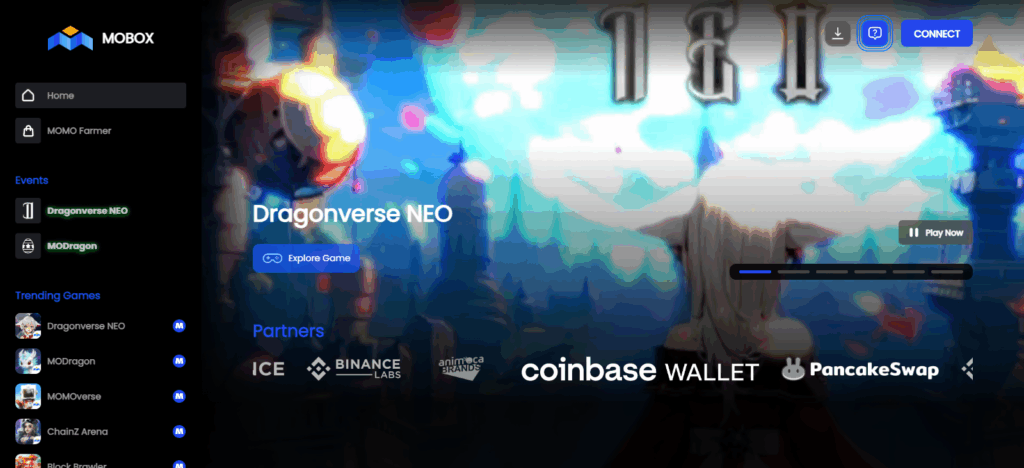
Step 2: Connect Your Wallet
Link your crypto wallet to MOBOX. This wallet will hold your NFTs and the rewards you earn from staking. Make sure your wallet supports the BNB Smart Chain network.
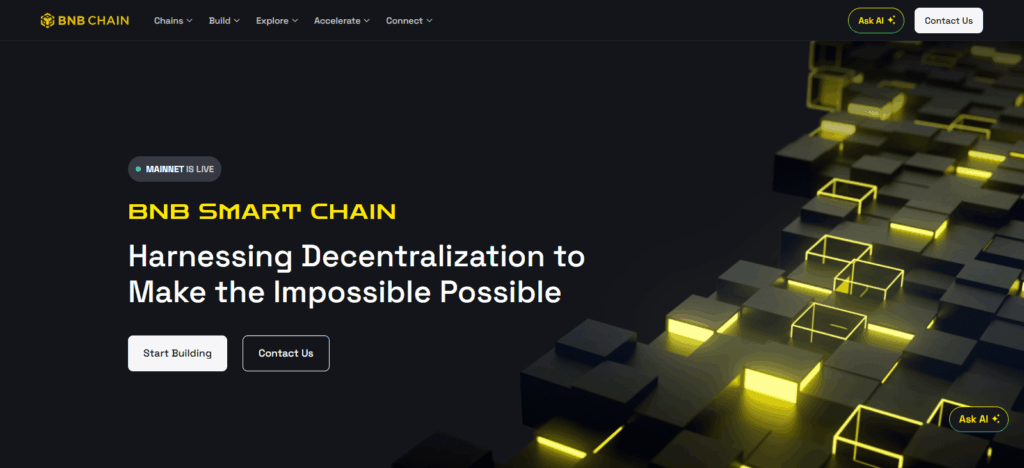
Step 3: Deposit or Purchase NFTs
If you don’t already own a MOBOX NFT, you can buy one directly on the platform’s marketplace. These NFTs, known as MOMOs, are required for staking and earning rewards.
Step 4: Stake Your NFT
Go to the “MOMO Mining Camp” section and choose the NFTs you want to stake. Confirm the transaction through your wallet. Once staked, your NFTs will start generating MBOX tokens as rewards automatically.
Step 5: Monitor and Claim Rewards
You can track your accumulated rewards on your dashboard. MOBOX allows users to claim MBOX tokens regularly. These tokens can be withdrawn, traded, or reinvested into new NFT assets.
Step 6: Unstake When Needed
If you want to sell or move your NFT, you can unstake it at any time. However, check for any lock-up period or gas fees before doing so.
Top NFT Staking Platforms in 2025
Rarible
Rarible stands out as one of the leading NFT staking platforms because it focuses on rewards for the community and decentralized governance.
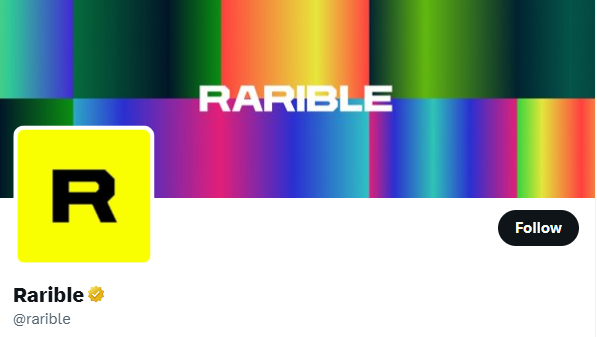
Users can stake their RARI tokens and earn rewards while being part of the platform’s decision-making. What makes Rarible unique is its dual benefit: users earn passive income from staking and also have a say in the platform’s future through voting rights.
Additionally, Rarible supports multiple blockchains, allowing NFT trading and staking on Ethereum, Polygon, and other networks. This mix of staking rewards, governance power, and multi-chain access makes Rarible a top NFT staking platform.
NFTX
NFTX is known as one of the best NFT staking platforms because it finds a way to create liquidity from usually illiquid NFT assets.
It lets users stake their NFTs into vaults that produce ERC-20 tokens, which represent fractional ownership of those NFTs. This setup allows for easy trading, earning yields, and accessing liquidity for NFT holders.
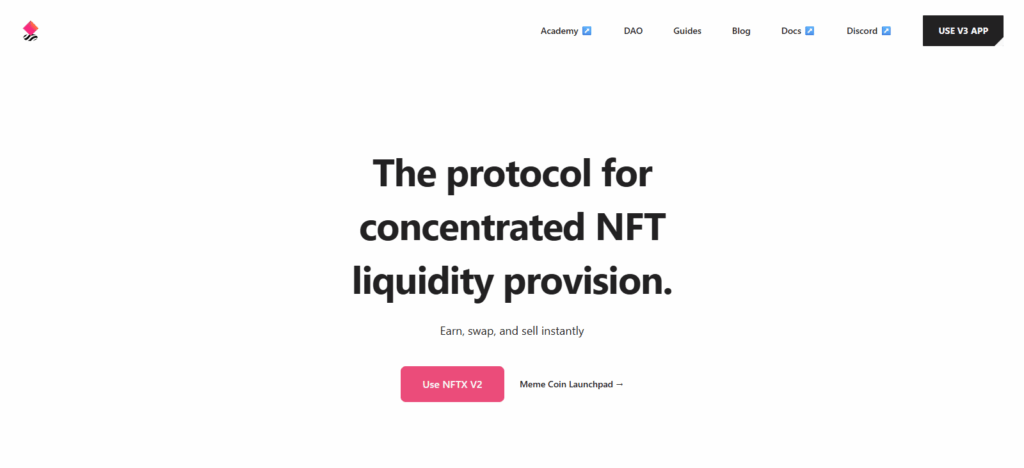
The standout feature of NFTX is its vault-based tokenization model that connects DeFi with NFTs.
This lets users earn rewards while still being part of valuable collections. By turning NFTs into liquid, tradable assets, NFTX helps investors maximize their returns and engage in a more active digital economy.
Splinterlands
Splinterlands is one of the top NFT staking platforms because it combines blockchain gaming with DeFi reward systems.
Players can stake their in-game NFT cards to earn SPS tokens. This improves gameplay engagement and offers a chance for passive income.
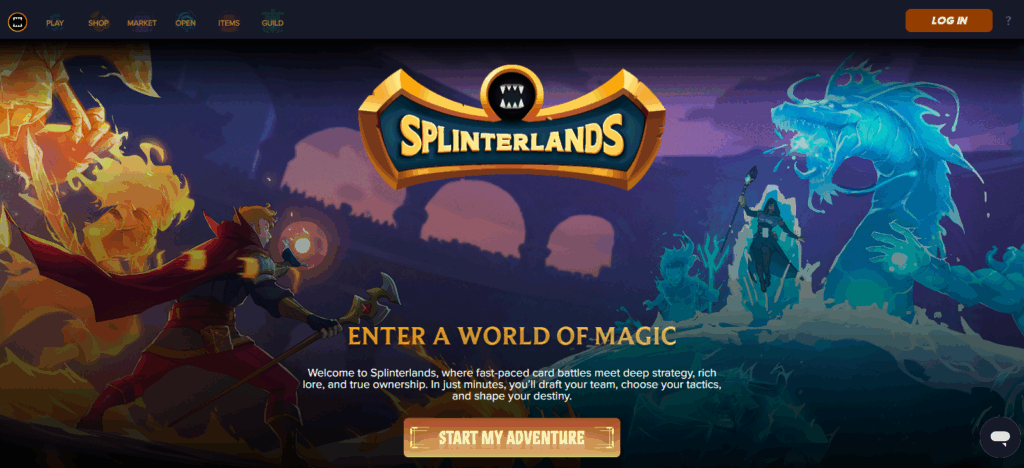
The platform’s unique strength is its play-to-earn staking model, where the value of NFTs affects rewards directly. Unlike typical staking platforms, Splinterlands includes staking in competitive battles, tournaments, and guild activities.
This gives NFTs extra value beyond just being collectibles. Its multi-chain support and strong player-driven economy create a solid ecosystem where both gamers and investors can earn long-term staking rewards.
How NFT Staking Works
Locking NFTs on a Platform: Users deposit or lock their NFTs into a supported staking platform or smart contract. These platforms include NFT marketplaces, DeFi protocols, or gaming ecosystems.
Smart Contract Activation: Once staked, a smart contract manages the NFT securely. It tracks the staking period, rewards, and ownership details without needing any middlemen.
Reward Generation: The platform gives out rewards in the form of native tokens, governance tokens, or other digital assets. The reward rate depends on factors like how long the NFT is staked, its rarity, or the project’s value.
Liquidity and Utility Creation: Staking makes NFTs more useful by turning static collectibles into income-generating assets. Some platforms also let users use staked NFTs for governance or liquidity pools.
Claiming Rewards: Users can regularly claim their earned tokens directly from the platform’s dashboard or wallet. This adds flexibility for reinvesting or trading.
Unstaking Process: After the staking period ends, or when the user decides to withdraw, the NFT is unlocked and returned to their wallet, often after paying low gas fees.
Benefits of NFT Staking
Earn Passive Income
NFT staking allows holders to earn regular rewards or tokens without selling their assets. This approach provides a steady source of passive income.
Increased NFT Utility
Staking gives NFTs additional uses beyond collecting or trading. This makes them productive and valuable in DeFi and gaming environments.
Strengthens Project Ecosystems
By staking NFTs, users help stabilize and grow the project’s ecosystem. This supports token circulation and community participation.
Long-Term Value Growth
Holding and staking NFTs can increase their long-term value, especially if the platform becomes popular or offers limited-edition rewards.
Governance and Voting Rights
Many NFT staking platforms reward participants with governance tokens. This allows them to vote on platform upgrades or new features.
Low Entry Barrier
Most NFT staking platforms are easy to use and require little technical knowledge. This makes it simple for both beginners and experienced investors to take part.
Tips to Maximize Your NFT Staking Rewards
Choose Reliable Platforms: Always stake your NFTs on trusted and audited platforms to ensure the safety of your assets and consistent reward payouts.
Diversify Across Multiple Platforms: Don’t rely on a single staking platform. Diversify your NFTs across different projects to spread risk and increase potential earnings.
Understand Reward Structures: Study each platform’s reward system, including payout frequency, lock-up periods, and token value, to select the most profitable option.
Stake Rare or High-Value NFTs: Rare NFTs often generate higher rewards. Prioritize staking valuable assets that offer greater earning potential.
Reinvest Earned Tokens: Use your earned tokens to buy more NFTs or compound your staking rewards for long-term profit growth.
Stay Updated with Platform Announcements: Follow official updates and community channels to take advantage of new reward programs, bonus events, or limited-time staking opportunities.
Monitor Market Conditions: Track NFT and crypto market trends to time your staking and unstaking strategically, maximizing returns when token prices rise.
Use Secure Wallets: Store your NFTs and rewards in reputable, non-custodial wallets to maintain full control and security of your digital assets.
Common Risks and How to Avoid Them
Smart Contract Vulnerabilities
Risk: Bugs or exploits in the platform’s smart contract can lead to loss of NFTs or rewards.
How to Avoid: Always stake on platforms that have undergone third-party security audits and have clear code reviews.
Market Volatility
Risk: Fluctuations in the value of NFTs or reward tokens can reduce overall profits.
How to Avoid: Diversify your staking portfolio and avoid staking during very unstable market periods.
Platform Scams or Rug Pulls
Risk: Fake or unverified platforms may disappear with users’ assets.
How to Avoid: Check the project’s credibility, look at community reviews, and use only trusted, established staking platforms.
Liquidity Lock-Up
Risk: Some platforms require lock-in periods, preventing users from withdrawing NFTs when market prices change.
How to Avoid: Read platform terms carefully and choose flexible staking options with shorter lock-up times.
Technical Errors or Wallet Issues
Risk: Mistakes in wallet connections or transactions may lead to lost or inaccessible NFTs.
How to Avoid: Double-check wallet addresses, use secure internet connections, and keep recovery keys safe.
Low or Changing Reward Rates
Risk: Some platforms may lower reward rates over time, affecting returns.
How to Avoid: Stay informed about platform updates and move assets if reward structures become less appealing.
Network Congestion and Gas Fees
Risk: High gas fees or network delays can reduce profit margins, especially on Ethereum-based platforms.
How to Avoid: Stake NFTs during low network activity or use chains with lower transaction costs like Polygon or BNB Chain.
Future of NFT Staking
The future of NFT staking looks promising as it combines decentralized finance (DeFi), gaming, and the metaverse into a single earning ecosystem. As blockchain technology develops, NFT staking will go beyond simple reward generation.
It will provide useful features like governance participation, yield farming, and cross-chain interoperability. Major NFT projects and GameFi platforms are showing more interest, making staking an important feature for adding long-term value and liquidity to digital assets.
Furthermore, improvements in smart contract security and eco-friendly consensus mechanisms will make NFT staking safer and more sustainable. This will appeal to both investors and everyday users worldwide.
Pros & Cons
| Pros | Cons |
|---|---|
| 1. Earn Passive Income – Allows NFT holders to earn regular rewards without selling their assets. | 1. Market Volatility – NFT and token prices can fluctuate, affecting the value of rewards. |
| 2. Increased NFT Utility – Adds practical use to NFTs beyond collecting or trading. | 2. Smart Contract Risks – Vulnerabilities or bugs in smart contracts may lead to asset loss. |
| 3. Strengthens Ecosystem – Supports project growth and community engagement. | 3. Liquidity Lock-Up – Some platforms restrict NFT withdrawals during the staking period. |
| 4. Governance Rights – Some platforms give voting power or governance tokens to stakers. | 4. Platform Scams – Unverified or new platforms may pose rug pull or fraud risks. |
| 5. Integration with DeFi and GameFi – Expands earning opportunities across multiple blockchain ecosystems. | 5. High Gas Fees – Especially on Ethereum, transaction costs can reduce overall profit. |
| 6. Long-Term Value Growth – Staking can increase the rarity and perceived value of NFTs over time. | 6. Changing Reward Rates – Reward structures can decrease without notice, reducing returns. |
Conclusion
In conclusion, earning rewards through the top NFT staking platforms is an exciting way to generate passive income while improving the value and use of digital assets.
By choosing trustworthy platforms like Rarible, NFTX, MOBOX, and Splinterlands, users can safely stake their NFTs and enjoy steady returns through organized reward systems. NFT staking not only helps investors but also supports blockchain ecosystems by promoting liquidity and community involvement.
However, understanding how platforms work, managing risks, and keeping up with market trends are key to getting the most out of your investments. With the right strategy, NFT staking can become a sustainable and rewarding investment option for the future.
FAQ
What is NFT staking?
NFT staking is the process of locking your NFTs on a blockchain-based platform to earn rewards in the form of tokens, governance rights, or other benefits—without selling your assets.
What rewards can I earn from NFT staking?
Rewards vary by platform but generally include native tokens, staking points, exclusive NFTs, or governance privileges. Some platforms also offer bonus rewards during promotional events.
How do I start staking my NFTs?
To start staking, connect your crypto wallet to a trusted NFT staking platform, deposit or lock your NFTs, and confirm the transaction. Your rewards will begin accumulating automatically based on the platform’s rules.
Can I unstake my NFTs anytime?
Most platforms allow you to unstake your NFTs anytime, but some have lock-up periods or withdrawal fees. Check the terms before staking.
Which are the best NFT staking platforms?
Top platforms include Rarible, NFTX, MOBOX, and Splinterlands, each offering unique staking models and reward systems tailored for different types of NFT holders.





